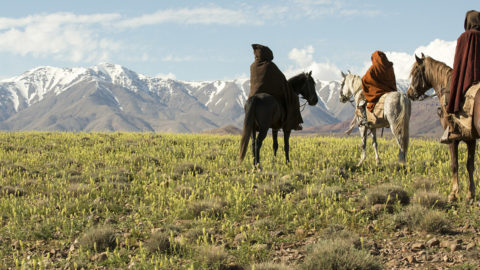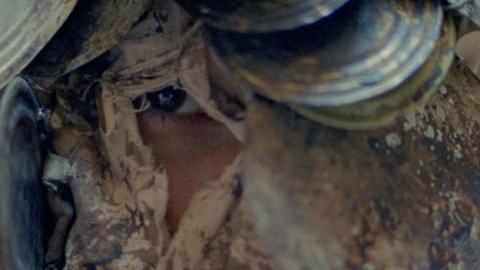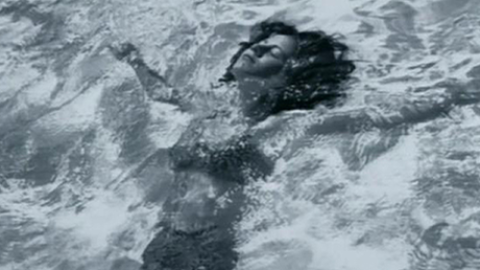Festivals: Marrakech 2016
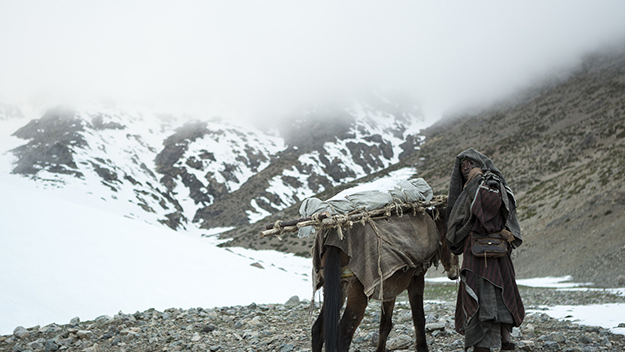
Mimosas
Amid the palm trees and minarets, within walking distance from the grand Koutoubia Mosque, the 2016 Marrakech International Film Festival balanced exclusivity with access. The free daytime screenings at the festival (held in December) were widely attended, with long lines leading up to the theater entrances. In the evening the red carpet shone with local royalty as well as stars and creators from films like Anna Rose Holmer’s tense The Fits to Oliver Laxe’s esoteric Mimosas.
Each night spectacle reigned, with two glamorous co-hosts presenting a game show-like awards ceremony to the black tie audience, followed by a screening of an out-of-competition film, predictably singled out for its ostensible mass appeal or for its connection to the stars of the night. The first of these was Kim Jee-woon’s historical action thriller The Age of Shadows, Warner Brothers’ first Korean-language production. Tasked with bringing down the Korean resistance before they can smuggle explosives to Seoul, a Korean turncoat working for the Japanese police (Song Kang-ho) becomes platonically infatuated with the head of the resistance/respected antiques dealer (Gong Yoo). What follows is a complex web of shifting allegiances, backstabbing, and undercover footwork with plenty of gunfights to singe off the film’s many loose ends.
Also screened out of competition, Aleksei Mizgirev’s The Duelist is a fiery Russian period piece laden with action and light on dialogue. The plot follows a disgraced 19th-century nobleman supposedly gifted with eternal life. The titular duelist, always clad in black leather with his collar eternally popped, scares up a profitable living winning duels for other men. Dark, glossy, and shot on IMAX, The Duelist illustrates some of the flashier, macho-mystical tendencies of current Russian cinema.
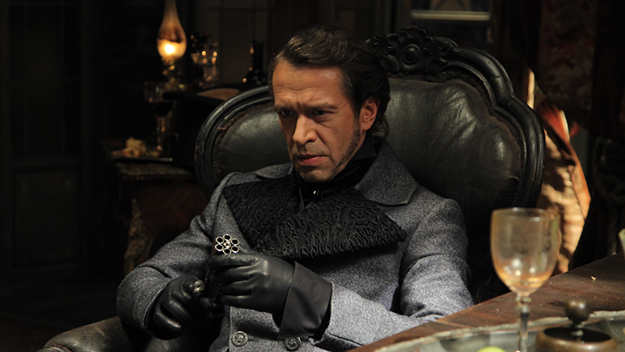
The Duelist
Overlapping with the festival’s mammoth Russian tribute, Ivan I. Tverdovsky’s Zoology is wildly different and offbeat. Screened within the main competition, the film follows Natasha, a lonely zoo employee who grows a tail. Her life is dismal even with her tail under wraps: her co-workers mercilessly ridicule her while her devout mother covers her bedroom walls with red painted crosses and raves about a woman in town rumored to be possessed by Satan. Resembling a large, plump rat’s tail, Natasha’s new appendage quickly inspires a new appreciation for life as soon as a young doctor proves himself to be a romantic interest. Tverdovsky’s second feature—his first, Corrections Class (2014), dealt with disabled students—displays the director’s early background in documentary filmmaking with shaky, attentive camerawork that adds voyeuristic appeal to the film and electrifies the visual of the ultimately disappointing last scene.
Directed by Sandrine Veysset, a former art director for Leos Carax, L’Histoire d’une mère also dabbles in magic with an adaptation of a tale by Hans Christian Andersen. Veysset’s first feature since Once Upon a Time in 2006, the film premiered at Marrakech in the main competition. L’Histoire tells the story of Neige, a young mother living out in the country with her son Louis and her witchy grandmother Heloise. Derided by the townspeople even as they call upon her grandmother to act as a healer, Neige and Louis carve out a modest, solitary existence until Neige crashes an old flame’s wedding party and dances with bewitching abandon, only to return home to a dreadful scene. Visually stark and elegantly told, the magical elements of the film seep in through the cracks rather than declare themselves outright. The effectiveness of this eerie film is largely dependent upon Lou Lesage’s performance as Neige, whose dance at the wedding is a sight to behold.
If the jury is any indicator of the festival’s overall curation, one need not look any further than its chairman, Hungarian auteur Béla Tarr. The group awarded the Best Directing prize to Wang Xuebo’s snail-paced Knife in the Clear Water, itself an example of Tarr-like patient direction. Set in the remote Ningxia province of western China, Knife features a cast of nonprofessional actors, all members of the Chinese-speaking Muslim group the Hui, and presents a spare and almost desolate account of impoverished rural life. The film ponderously follows the elderly Ma Zishan as he reluctantly decides to sacrifice his only bull to honor his recently deceased wife. Cinematographer Wang Weihua’s many static shots reveal painterly compositions, tracking the change in seasons from fall to snow-capped winter over the course of the 40-day mourning period for Ma’s late wife. Reportedly inspired by Andrei Tarkovsky, Andrew Wyeth, and Jean-François Millet, Knife in the Clear Water was shot in the boxy 4:3 aspect ratio, containing images of striking vistas within a traditional frame. With little dialogue or action, all attention is on the direction, the framing, and the cinematography.
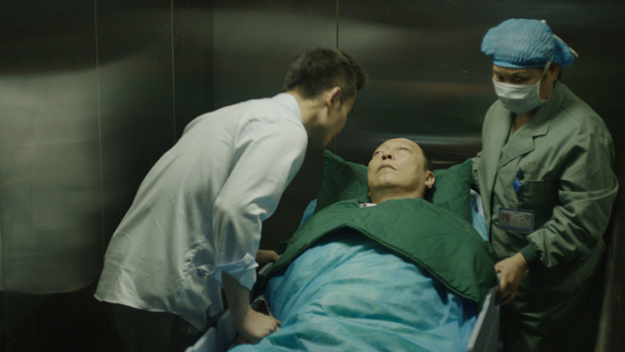
The Donor
Zhang Xichuan’s The Donor, with its demonstrative pathos, was awarded the more generalized Best Picture award, the “Golden Star.” Yang Ba (Ni Dahong) is a poor mechanic who is on the verge of being pushed out of his home in order to make room for luxury apartments. His exasperated wife and underachieving son ignore him unless they are asking for money. Circumstances seem to improve after Ba secretly sells his kidney to a wealthy woman but swiftly decline when the kidney doesn’t take and the woman’s dissembling brother (Qi Dao) demands that Ba’s son give one of his kidneys in turn. Dahong’s performance as Ba is frightfully compelling; his face remains motionless for much of the film while his bugging eyes illustrate myriad emotions—only breaking when he receives the initial payment for his kidney. Slow-moving with a few twists, Zhang’s film achingly exemplifies the inherent tragedy of poverty.
A confusing hodgepodge of a film, Arnaud des Pallières’ Orpheline made for an eventful late-night screening towards the end of the fest. Projected at the beautiful Cinéma Le Colisée, offsite from the main festival hub, the film uses four different actresses to portray one character. Starring Adèle Haenel, Adèle Exarchopoulos, Solène Rigot, and Gemma Arterton, the compounded identity of the so-called orphan is not revealed until the final act, which plays as a limp twist instead of a revelation. Exarchopoulos is pouty and tempestuous as ever, Haenel complex and intriguing, while Gemma Arterton skips across multiple storylines with typical panache. Occasionally gripping but painfully epic, only the lead actresses’ stellar performances save a few sequences from the film’s overtly ornate structure.
There was a glut of exceptional performances at the 2016 festival, many of which transcended their parent films. Some of the most memorable performances, however, occurred off screen. The opening and closing ceremonies were orchestrated for maximum effect, while the raucous audience at films like Orpheline clearly enjoyed the show. The sense of excitement and engagement that suffused the proceedings provided for a distinctive festival-going experience.
Margaret Barton-Fumo is the editor of Paul Verhoeven: Interviews (University Press of Mississippi) and a longtime contributor to Film Comment.



